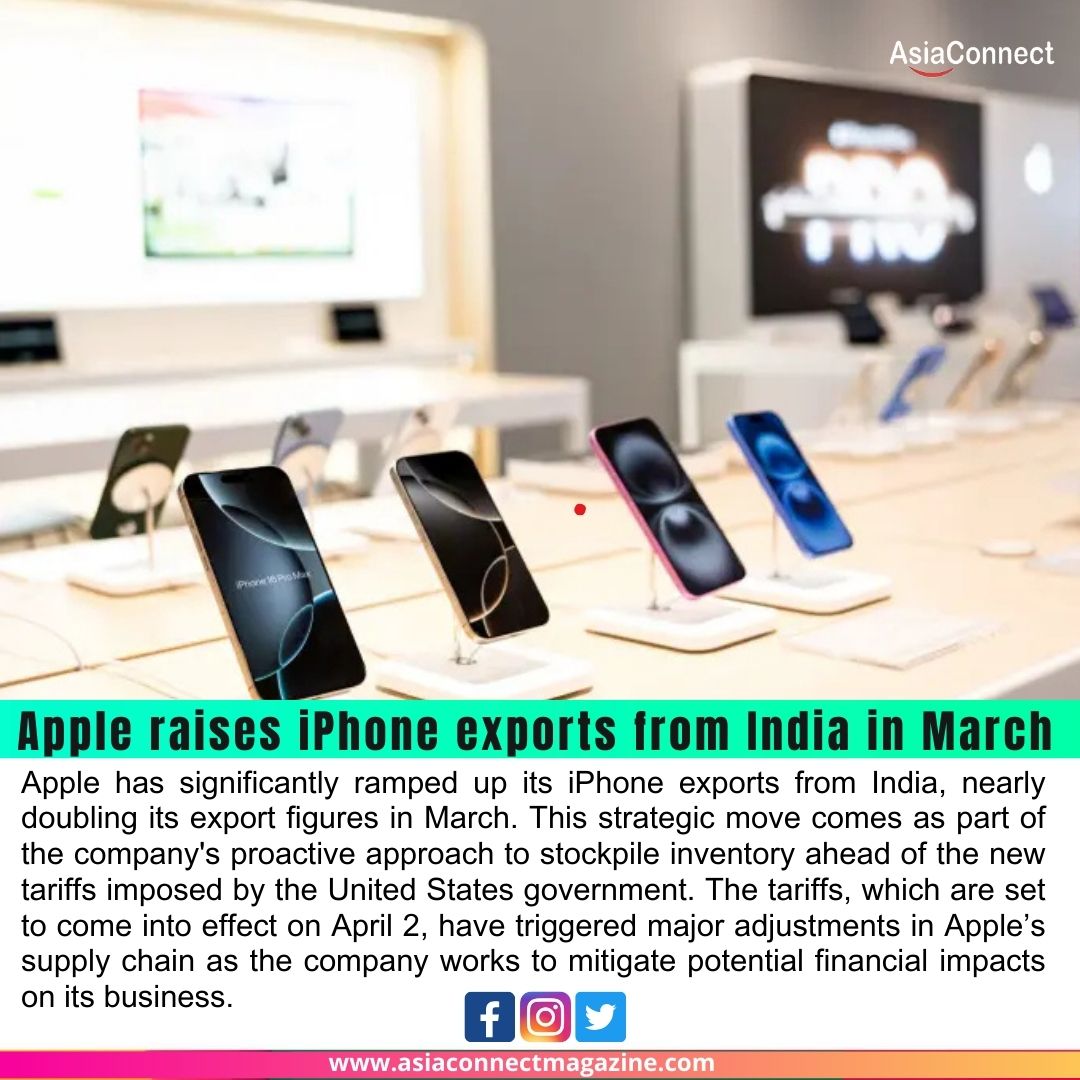Apple Increases iPhone Exports from India in March Ahead of New US Tariffs
Apple has significantly ramped up its iPhone exports from India, nearly doubling its export figures in March. This strategic move comes as part of the company’s proactive approach to stockpile inventory ahead of the new tariffs imposed by the United States government. The tariffs, which are set to come into effect on April 2, have triggered major adjustments in Apple’s supply chain as the company works to mitigate potential financial impacts on its business.
In March 2025, Apple’s vendors exported iPhones worth approximately INR 1.5 lakh crore, a substantial increase compared to INR 85,000 crore in the previous fiscal year. This surge in exports primarily targeted the US market, reflecting Apple’s effort to stock up on iPhones ahead of the new trade measures announced by the Donald Trump administration. The new tariffs include a 10% baseline duty on all imports into the US, along with an additional 26% country-specific tariff on goods imported from India. The tariffs are set to come into effect on April 9, 2025, creating a sense of urgency for Apple to ensure a smooth supply chain during this transition period.
The decision to increase iPhone exports from India is indicative of Apple’s growing reliance on India as a key manufacturing and export hub. India has become an essential part of Apple’s strategy to diversify its supply chain and reduce dependence on China, where the company has faced rising production costs and trade tensions with the US. The move is also aligned with Apple’s broader goal of shifting some of its manufacturing operations to countries outside of China, particularly as tensions between the US and China continue to impact global trade dynamics.
Apple has been working closely with local manufacturers, such as Foxconn and Wistron, to assemble iPhones in India, and this collaboration has proven fruitful in meeting the growing demand for Apple products. The Indian government’s push to bolster domestic manufacturing and improve the business environment for international companies has made India an attractive destination for Apple and other tech giants. With a relatively low-cost labor force and favorable government policies, India is emerging as a competitive location for tech companies to set up production facilities.
The decision to export a significant number of iPhones to the US ahead of the new tariffs is also a response to concerns about how the tariffs will affect pricing and market share. By ensuring that a large number of iPhones are already in the US market before the tariffs kick in, Apple can avoid the immediate impact of higher prices, thus safeguarding its competitive edge. This inventory-building strategy will allow Apple to maintain a steady supply of products while navigating the uncertain terrain of changing trade policies.
Looking ahead, Apple’s increased reliance on India for production and export is expected to continue as the company adapts to the changing global trade landscape. With the new tariffs set to reshape the dynamics of international trade, Apple’s proactive approach to mitigating the impact of these measures will likely serve as a model for other companies in the tech industry. As the global supply chain evolves, Apple’s decision to increase its iPhone exports from India in response to US tariffs underscores the growing significance of India in the company’s long-term strategy.
In conclusion, Apple’s decision to increase iPhone exports from India ahead of new US tariffs highlights the company’s strategic foresight and adaptability in the face of changing global trade conditions. By taking proactive steps to secure its supply chain and ensure continued market access, Apple is positioning itself for sustained success in an increasingly complex global marketplace.





